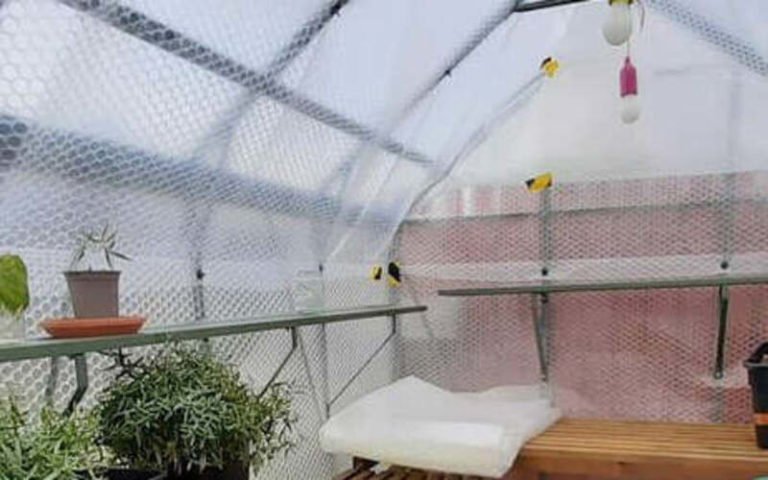Pyramid Gardening: A Complete Guide to Building and Growing Your Own Pyramid Garden
Are you looking for an innovative and space-saving way to grow your own fruits, vegetables, and flowers? Look no further than pyramid gardening! This ancient gardening technique has been used for centuries in various cultures and is now making a comeback as a modern and practical way to grow plants in limited spaces.
In this article, we’ll explain what pyramid gardening is, how to build a pyramid garden, what plants are best suited for this type of gardening, and how to care for your pyramid garden to ensure a bountiful harvest.
What is Pyramid Gardening?
Pyramid gardening is a gardening technique where plants are grown on a pyramid-shaped structure, with each level of the pyramid providing a growing space for a different type of plant. The pyramid structure is made up of layers of soil, compost, and other organic matter, which provides an optimal growing environment for plants.
The idea behind pyramid gardening is that it maximizes the use of limited garden space while also providing excellent drainage and aeration for plants. This technique is particularly useful for urban gardeners or those with small outdoor spaces who want to grow their own produce or flowers but don’t have enough room for traditional garden beds.
Building a Pyramid Garden
Building a pyramid garden isn’t too hard. All you need are a few supplies and some basic do-it-yourself skills. Here’s what you’ll need:
Materials:
- Wooden stakes
- Lumber
- Screws or nails
- Soil
- Compost or other organic matter
- Plants or seeds
Tools:
- Drill
- Hammer
- Saw
- Shovel
Step 1: Mark the Location of Your Pyramid Garden
The first step in building a pyramid garden is to determine the location where you want to build it. Ideally, you should choose a spot that receives plenty of sunlight and is relatively level. Use wooden stakes and string to mark the four corners of your garden bed.
Step 2: Build the Base of Your Pyramid Garden
Using lumber, build a square frame that is the size of the base of your pyramid garden. This will serve as the foundation for the pyramid structure. Secure the corners with screws or nails.
Step 3: Build the First Layer of Your Pyramid Garden
Inside the frame, add a layer of soil and compost, about six inches deep. This will be the base layer for your plants.
Step 4: Build the Second Layer of Your Pyramid Garden
Using lumber, build a second square frame that is slightly smaller than the first frame. This will be the second level of your pyramid garden. Place this frame on top of the first layer and secure it with screws or nails.
Step 5: Add More Soil and Compost
Inside the second frame, add another layer of soil and compost, about four inches deep. This will be the growing medium for the plants on the second level.
Step 6: Repeat the Process
Repeat steps 4 and 5 for each level of your pyramid garden. Each level will get smaller as you go up. The number of levels you build will depend on the size of your pyramid garden and the types of plants you want to grow.
Step 7: Plant Your Garden
Once your pyramid garden is built, it’s time to plant your favorite fruits, vegetables, or flowers. Make sure to choose plants that are suited to the growing conditions in your area and that will thrive in the pyramid structure.
Best Plants for Pyramid Gardens
While most plants can be grown in pyramid gardens, some are better suited than others. Here are some plants that are particularly well-suited to pyramid gardening:
- Herbs: Herbs like basil, parsley, and thyme are excellent choices for pyramid gardens, as they require little space and can be grown in the smaller levels of the pyramid.
- Leafy greens: Lettuce, spinach, and kale can also be grown in the lower levels of the pyramid and are easy to harvest.
- Strawberries: Strawberry plants do well in pyramid gardens and can be grown in the upper levels.
- Tomatoes: Tomatoes are a popular choice for pyramid gardens and can be grown in the larger levels of the pyramid.
- Peppers: Bell peppers, chili peppers, and other types of peppers can also be grown in the larger levels of the pyramid.
Caring for Your Pyramid Garden
Like any other garden, a pyramid garden needs to be cared for and maintained regularly to make sure the plants stay healthy and the harvest is good. Here are some tips for caring for your pyramid garden:
A. Watering: Make sure to water your plants regularly, especially during dry spells. Use a watering can or a hose with a gentle spray to avoid washing away the soil and compost from the pyramid structure.
B. Fertilizing: Pyramid gardens benefit from regular fertilization with organic matter like compost or aged manure. Apply fertilizer every few weeks, depending on the type of plant you’re growing.
C. Pest and Disease Prevention: Keep an eye out for pests like aphids, slugs, and snails and remove them by hand or with natural pest control methods like neem oil or insecticidal soap. To prevent diseases, make sure to rotate your crops and avoid overcrowding plants.
D. Pruning and Harvesting: Regular pruning will help your plants stay healthy and productive. Harvest your plants when they are ripe, and remove any dead or diseased leaves or stems.
Benefits of Pyramid Gardening
Pyramid gardening offers several benefits, including:
Space-saving design: Pyramid gardens are perfect for small outdoor spaces or urban gardens, as they maximize the use of limited space.
Increased crop yields: The pyramid structure of the garden allows for better drainage and aeration, which can result in higher crop yields.
Accessibility for those with physical limitations: Pyramid gardens can be built at different heights, making them accessible for those with physical limitations or who have difficulty bending or kneeling.
Aesthetically pleasing garden design: Pyramid gardens can add a unique and eye-catching element to your outdoor space, making them both functional and beautiful.
Conclusion
Pyramid gardening is an old way to grow plants in small spaces that has been used for hundreds of years. With a few materials and some basic DIY skills, you can build your own pyramid garden and enjoy fresh produce or flowers all season long. By choosing the right plants, caring for your garden, and taking advantage of the benefits of pyramid gardening, you’ll be well on your way to a beautiful garden.
FAQ:
Q: What is pyramid gardening?
Ans: Pyramid gardening is an ancient gardening technique that involves building a pyramid-shaped structure out of wood, stone, or other materials, and then filling it with soil and compost. The pyramid structure allows for better drainage and aeration, which can result in higher crop yields and healthier plants.
Q: What are the benefits of pyramid gardening?
Ans: Pyramid gardening offers several benefits, including maximizing garden space, increasing crop yields, increasing accessibility for those with physical limitations, and creating a visually appealing garden design.
Q: Can I build a pyramid garden myself?
Ans: Yes, building a pyramid garden is a DIY project that requires some basic carpentry skills and materials. You can find instructions and plans online, or you can create your own design.
Q: What kind of plants can I grow in a pyramid garden?
Ans: You can grow a variety of plants in a pyramid garden, including herbs, flowers, vegetables, and fruits. Some popular options include strawberries, tomatoes, peppers, lettuce, spinach, and kale.
Q: How do I care for my pyramid garden?
Ans: Pyramid gardens need to be cared for and maintained regularly. This includes watering, fertilizing, preventing pests and diseases, pruning, and harvesting. Make sure to water your plants regularly, fertilize with organic matter, keep an eye out for pests and diseases, and harvest your plants when they are ripe.
Q: Can I build a pyramid garden indoors?
Ans: Yes, you can build a pyramid garden indoors using a smaller structure and growing plants that do well in indoor conditions, such as herbs or leafy greens.
Q: Is pyramid gardening a sustainable gardening solution?
Ans: Yes, pyramid gardening can be a sustainable gardening solution when using organic materials for the soil and compost, rotating crops to prevent diseases, and using natural pest control methods. Additionally, pyramid gardening can help reduce water usage and promote healthy soil.
Also Read:
Cropping Systems: An Essential Guide to Sustainable Agriculture







